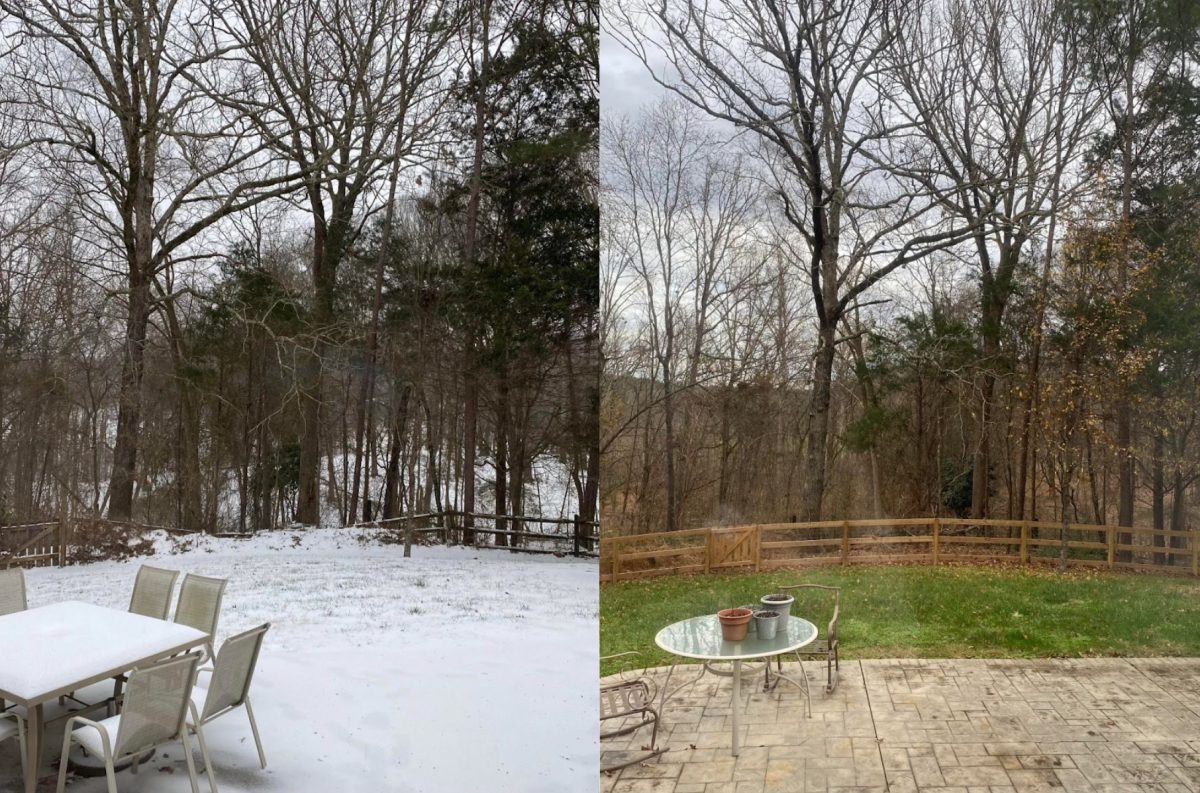For many kids, nothing beats the surprise of opening their curtains on a chilly winter morning to see a bright blanket of snow covering streets, rooftops and lawns. Some have even described the holiday season as appearing a bit “brighter” when they were younger and saw snow.
These memories seemingly revolve less around nostalgia or brighter Christmas lights, but instead are caused by the ever-changing environment.
Multiple factors may have made the holidays feel a bit more idyllic when people were younger, whether that be less school work or the anticipation of Santa’s arrival, but there are some parts of the winter months that just aren’t the same today, no matter someone’s age.
Where has the snow gone? Why do weather forecasts show spring temperatures even during the winter? When it comes to these kinds of questions, the answer can best be “boiled down” to climate change.
This year, the National Oceanic and Atmospheric Administration’s (NOAA) Climate Prediction Center initially anticipated that Charlotte, NC, would have a 33-40% below average snowfall season this year (from December 2024 – February 2025).
In October, 2024, a WCNC article reminded readers that “the last time Charlotte talked about snow was after it snowed back-to-back-to-back weekends in January 2022.” That winter season, Charlotte got four inches of snowfall, and the last time the city received 10+ inches of snowfall was the winter of 2003-2004.

(Kate Saussele)
Heat Miser and Snow Miser, the infamous brothers featured in the 1974 movie “The Year Without a Santa Claus” have come to represent exactly what many communities are seeing as the past and present of the holidays.

(Kate Saussele)
For years, the holidays in many national cities resembled Snow Miser’s “White Christmas” view. Kids woke up early on Christmas morning, peeked out of frosted windows and saw the sparkling blanket that covered their warm homes. Making snow angels, building snowmen, wearing winter gear and driving over salted roads characterized these childhood winters.
Kate Noble, the Earth and Environmental Science teacher at Community School of Davidson (CSD), distinguishes her early Christmases in Indianapolis, IN, with snow days.
“[As a young adult] I remember we had a beautiful snow storm in downtown Indy on Christmas Eve, and we had walked to a theater to watch ‘Mamma Mia’ with my grown-up sister, too, and it was just really cool,” Kate Noble said. “I can remember every Christmas Eve in Memphis growing up doing snow dances, just hoping for snow.”
However, as the years passed, it felt like the snow is disappearing. Some people can’t even remember the last time they saw snow. Instead of a green or white Christmas, recently there have been more barely brisk, snowless Christmases.
“Having now been [in NC] eleven years, watching my son grow up where we have Santa drive by on top of a fire truck every year is just a really special thing about Davidson. But I can remember many of the nights [in previous years] being so balmy outside and thinking, this is the strangest sensation; that we’re waving at Santa, and I bet he’s sweating in that suit,” Noble said.
Regan Downey (‘25), president of CSD’s Environmental Conservation Club, shares a similar view.
“I’ve lived in NC my whole life. The changes that I’ve noticed in NC’s climate is that there has been less and less snow every year, as well as hotter summers and more hurricanes,” Regan Downey said.
The Green City Times dove deeper into the environmental side of this phenomenon. As expected, the Northern US states are more likely to receive snow because they harbor the conditions needed for flakes to form. However, even some of these states aren’t safe from the warm effects of climate change. The article says that in the last two weeks of 2023, nationwide temperatures were 10-20 degrees (F) above average, “particularly in the Midwest,” an area that often receives winter snow.
In December 2023, The New York Times published an article about how much of the country wouldn’t be getting their “White Christmas” last year.
The article also mentions that even the 1942 song “White Christmas” was written during a period of no snow. The lyric “dreaming of a White Christmas, just like the ones I used to know” is starting to have an even more familiar ring in recent years.
“I think that the idea of a ‘White Christmas’ has been altered,” Downey said. “No one who’s not up North expects to have a ‘White Christmas’ anymore.”
All across the country, winters are getting shorter, snow levels are generally decreasing, and the holidays, because of climate change, may just feel a bit less festive.
Looking ahead, climate change will likely continue to take hold and impact more of the snowy winter mornings like Charlotte recently saw, but across the US, hopes and dreams of sledding and building snowmen will still cause sparks.
With all due respect to the battling brothers, Heat Miser and Snow Miser, it is Mother Nature who ultimately has the final say. And Mother Nature loves to be unpredictable.







